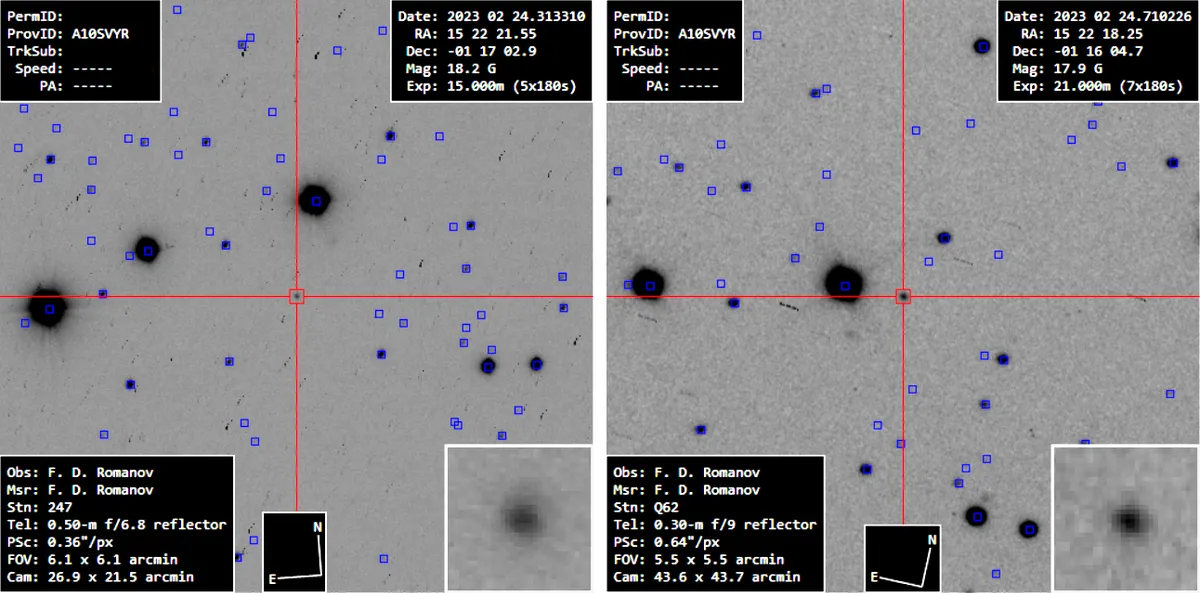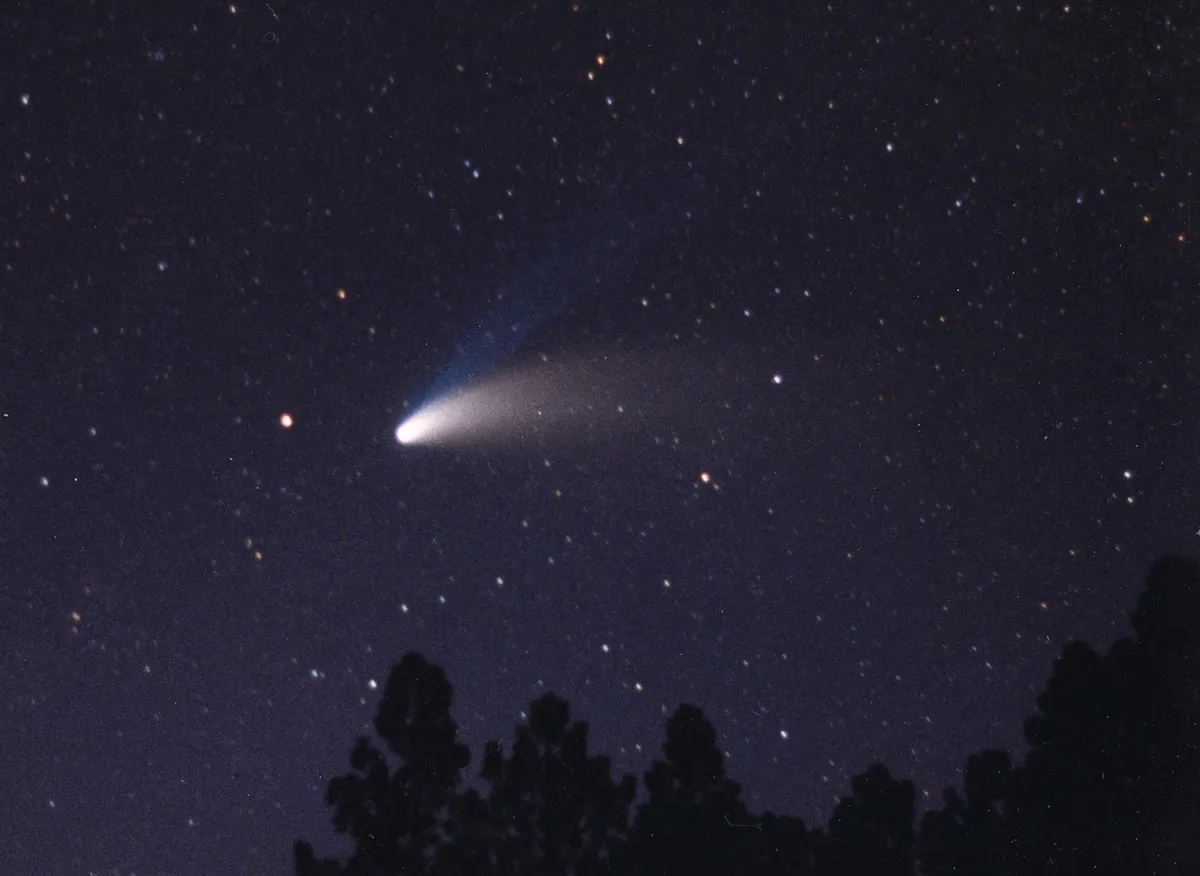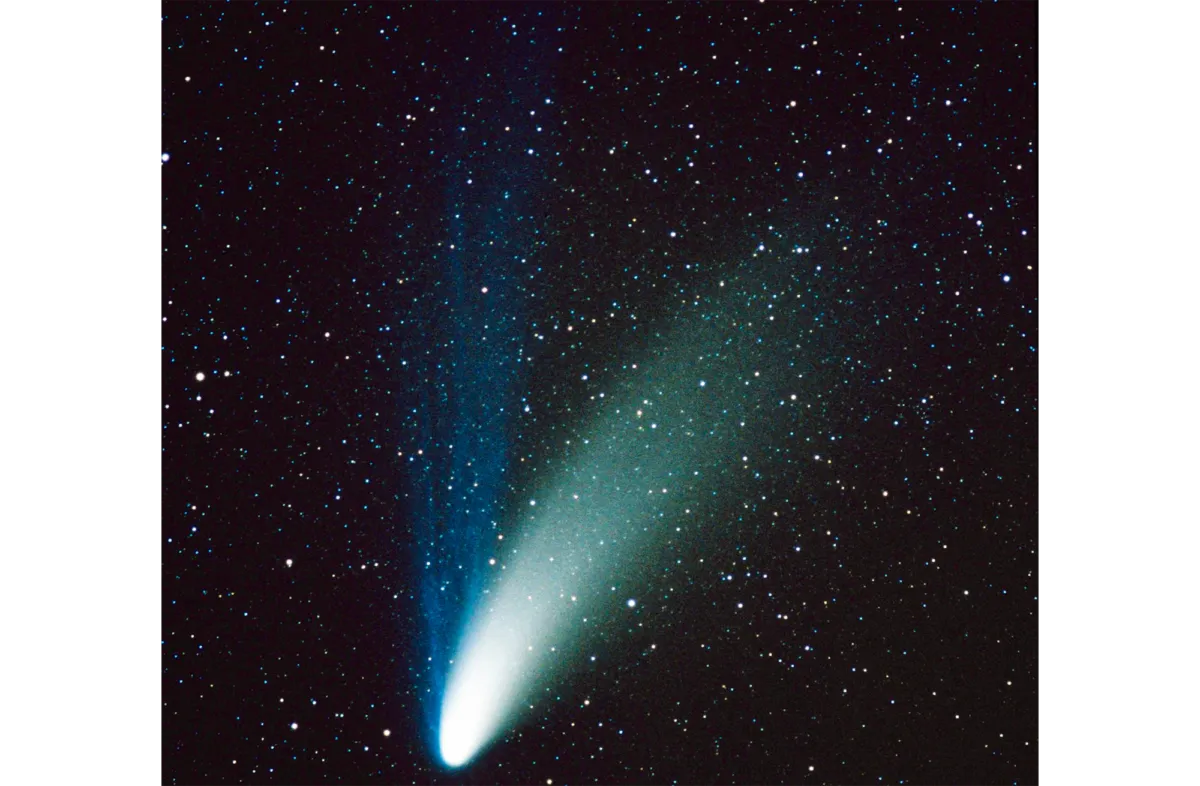Comet C/2023 A3 (Tsuchinshan-ATLAS) was one of the astronomy highlights of 2024.
The build-up to the comet's emergence was immense, and didn't disappoint once it reached its best throughout September–December 2024.
Comet C/2023 A3 (Tsuchinshan-ATLAS) quick facts

Long period comet C/2023 A3 (Tsuchinshan-ATLAS) was spotted in February 2023, during a sky survey performed by ATLAS – the Asteroid Terrestrial-impact Last Alert System – using the 0.5-m f/2 Schmidt reflector telescope operated at the Sutherland Observatory in South Africa.
Back then it was an uninspiring 18th magnitude spot on a photo and was given the equally uninspiring name 'A10SVYR'.
When its orbit was calculated, it was noticed that it had already been spotted by the Purple Mountain Observatory in China on 9 January 2023, when it was magnitude 18.7.

Follow-up observations revealed A10SVYR had a short tail, so it was designated a comet, and following the long-established naming convention it was given a name honouring both its discoverers: C/2023 A3 (Tsuchinshan–ATLAS).
Why did it cause so much excitement, when comets are now discovered daily?
Because crunching the numbers showed that Comet A3’s orbit would bring it close enough to both the Sun and the Earth in September/October 2024.
There was a good chance it would be visible to the naked eye, and had the potential – if everything turned out right - to be a bright naked-eye comet.
See the best images of comet C/2023 A3 Tsuchinshan-ATLAS

Unfortunately, as is the case so often with astronomy stories, some in the media added two and two and got 100.
Soon social media was groaning under the weight of posts and stories looking forward to the arrival of the most spectacular comet since Hale-Bopp graced our skies all those years ago.
Of course, we were very careful to not buy into this silliness.

We made it clear from the start that a celestial spectacle was not guaranteed, and we wouldn’t be able to predict the comet’s visual appearance in 2024’s autumn sky until more detailed and accurate observations had been made by experienced astronomers.

The story
Almost two years after its discovery, by autumn 2024, Comet A3 was finally shining in the evening sky, and, as we had hoped, was bright enough to be visible to the naked eye.
If you wanted to see Comet A3 all you had to do was go out half an hour or so after sunset, face the west, and there it was, right before your eyes – a misty streak of light low in the sky, to the upper right of the bright planet Venus.

And while it might not have been a Great Comet like the beloved Hale-Bopp, it was definitely a great comet to look at, brighter and more beautiful than Comet NEOWISE which graced our skies four years previously.
Having whooshed around the Sun, Comet A3 was now being observed and photographed around the world, delighting skywatchers both north and south of the equator.

A phenomenon known as 'forward scattering' meant the comet was even bright enough to see from light polluted towns and cities, though the best views were obviously enjoyed from darker locations.
Having peaked in brightness at magnitude -4 at its closest to the Sun – so bright a few very skilful and experienced observers actually imaged it in daylight – Comet A3 was shining at around first magnitude.

It had a narrow dust tail more than a dozen degrees long, obvious to the naked eye from a dark sky site and fascinating to trace in binoculars.
It was also sporting an 'anti-tail', a very sharp spike of material jutting out of its head like a celestial unicorn horn, pointing towards the horizon.

The build-up to brightness
As October began, it was hard to believe that the tiny, out-of-focus star we were all looking at on grainy, tracked and stacked images a few months ago had grown into a quite stunningly beautiful comet, with a fifteen-degree long tail shooting up from the horizon like a search beam…
Although that glorious view of Comet C/2023 A3 was only available from the southern hemisphere, where the comet was a second magnitude, whip-tailed star shining in the twilight sky before sunrise and clearly visible to the naked eye, observers positioned in countries as far north as Spain, Italy and even France were able to see the comet too.

Unfortunately the comet was so low in the sky before sunrise from latitudes further north that only a handful of dedicated – and lucky! – imagers were able to capture it on camera from the UK and US states north of Florida.
Wide-angle views showed it as a thin, slightly curved vapour trail to the right of the Moon, looking very much like one of those classic comets from years gone by.

After processing, zoomed-in images taken through longer lenses and telescopes showed fascinating and intriguing detail within the comet’s long dust tail.
They also showed a delicate, powdery blue gas or ion tail spiralling away from the head.
There was even an image of Comet A3 captured by NASA's SOHO telescope.

All those northern hemisphere observers who had been desperate to see Comet C/2023 A3 had their chance to gaze at it through their binoculars and telescopes, and turn their cameras towards it too – weather permitting, of course.
Northern observers had an amazing run with Comet A3, it all kicking off over the weekend around 12 October 2024.

There was a lot of hype about Comet C/2023 A3 when it was discovered in 2023.
Within days the internet was awash with predictions that the "comet of the century" was on its way, and that in October 2024 skywatchers and stargazers would be "dazzled” by it.
A3 was not the Comet of the Century, and no-one was so dazzled by it that they had to wear sunglasses.

Comet C/2023 A3 – the story so far
When we reported on the comet back in early September 2024, we were pleased to be able to write that Comet C/2023 A3 (Tsuchinshan-ATLAS) hadn’t actually vanished, and contrary to recent reports suggesting Comet C/2023 A3 is doomed, it hadn’t shown any signs of falling apart.
Comet C/2023 A3 (Tsuchinshan-ATLAS) was lost to visual observers over the summer of 2024, when it became too close to the Sun to be seen from either the northern or southern hemisphere.
That left comet watchers to cross their fingers that it was continuing to increase in brightness.

It was visible to several of the satellites that monitor activity on and around the Sun, but not in any detail, just a few trailed pixels really.
So comet observers around the world were waiting anxiously for it to reappear in the sky in September.
We knew from calculating the comet’s orbit and track across the sky that observers in the southern hemisphere would be the first to be able to see the comet again, around mid-September.
Southern comet observers were scanning and sweeping the morning sky before sunrise, hoping to recover it, and crossing their fingers it would still be in good shape and on track to be visible to the naked eye in October 2024.
If it was fainter than predicted that could have been bad news…

On the morning of 11 September 2024, veteran comet observer Terry Lovejoy photographed the comet in the morning sky from Wellington Point in Australia.
On his stack of 30x 1.3 second exposures taken with a 135mm lens the comet can be seen clearly, even though it was just 14 degrees from the Sun. He estimated the comet’s magnitude to be around +5.5.

A day later another veteran comet observer and photographer, Michael Mattiazzo, imaged the comet, also in the Australian morning sky, and put its magnitude a little brighter, perhaps 5.2.
As we had hoped, during its absence from our skies Comet A3 continued to develop as predicted.
Why everyone was talking about C/2023 A3 (Tsuchinshan-ATLAS)

You might remember how beautiful Comet Hale-Bopp was back in 1997.
Even if you didn’t see it yourself, if you speak its name at an astronomy society meeting you’ll see many people smile, as fond memories of seeing its twin tails painted on the spring sky come flooding back.
But anyone predicting A3 would be 'another Hale-Bopp' was unwise.

Upon approach to the Sun, Comet C/2023 A3's orbit appeared to be millions of years long, meaning this is probably the comet's first trip to the inner solar system.
By the end of September 2024 it became a morning object and reached perihelion - the closest point to the Sun in its orbit - on 28 September 2024.
Our best views of A3 are now, as it moved up into the evening sky around 10 October.
Keep checking back on this page. We’ll keep you updated!
Did you observe or photograph Comet C/2023 A3 Tsuchinshan-ATLAS, share your observations and images with us by emailing contactus@skyatnightmagazine.com
Find out more about the comet via the International Astronomical Union's Minor Planet Center or at astro.vanbuitenen.nl/comet/2023A3.

